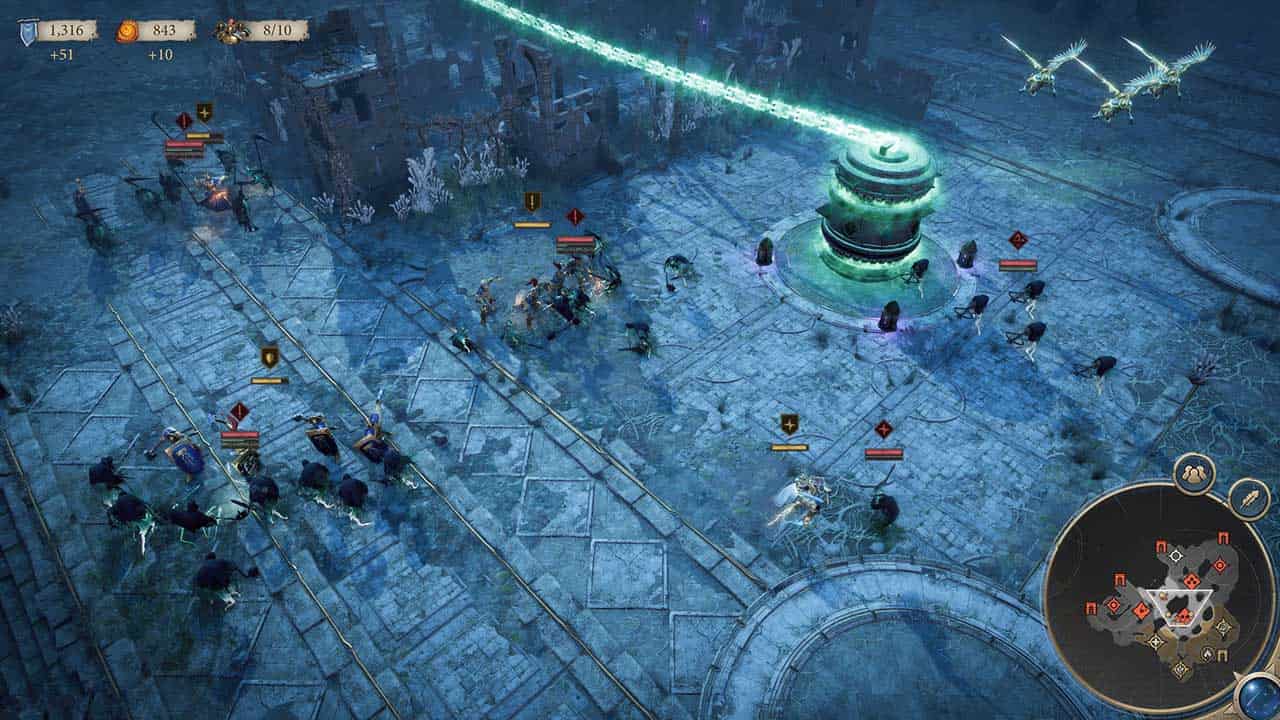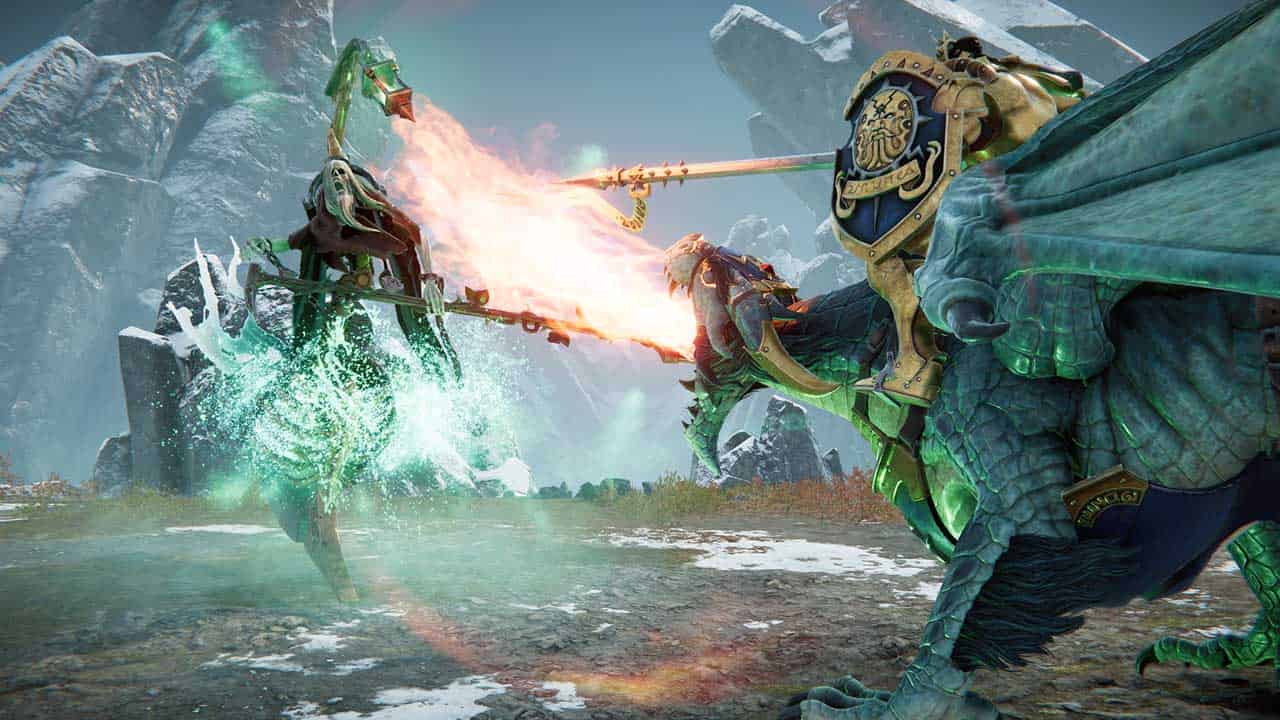Video Gamer is reader-supported. When you buy through links on our site, we may earn an affiliate commission. Prices subject to change. Learn more
Warhammer Age of Sigmar Realms of Ruin has a lot to prove to those like me who are only tangentially familiar with Warhammer. When you pitch ‘Warhammer RTS’ to us, the first thing that comes to mind is Relic’s amazing Dawn of War series. I’m happy to say that, after some hands-on time with Realms of Ruin at Gamescom – while this game is carrying on that quality bar pretty well.
To fully explain Warhammer’s various sub-universes can take a bit of time, so we won’t bother here – but we will say that Age of Sigmar is often considered the more streamlined brother to 40K, and that’s reflected well here. Despite having very little experience, I found myself quickly settling into the fast-paced RTS action with a strong narrative focus. Indeed, an opening cutscene set the table, and I was quickly in control of a small but no-less formidable bunch of soldiers, heading to capture a number of nodes on the map in front of me.

You’ll find things fairly familiar at first as the game eases you into things – across the map you’ll find Arcane Conduits, which act as capture points allowing you to build your forces. Then, you can upgrade these points by placing strategic structures or buildings, to generate more resources. Generate enough resources, and you can upgrade the conduits themselves – offering bonuses to your units in the form of upgrades, or additional resources that allow you to perform powerful, battle-changing abilities. It’s small scale tactical choices that you can fairly easily switch between, rather than locking you into a set strategy for the rest of the map. (You can easily change your mind, for a cost) But they work really well, and it makes the action feel very chunky, fast paced and everything you want a Warhammer game to be by keeping things tightly focused, rather than worrying about masses of armies on a grander scale.
And while this all seems fairly familiar, we were soon thrown into another, slightly later mission that introduced a new gametype. Here, we were faced up against a horde of the game’s newest-revealed faction, the Nighthaunt. They’re basically undead spectres that like to hunt in packs. And of course, this means they take a slightly different approach from just trying to throw numbers at them – which won’t work in your favour. These Nighthaunt held an artefact, that was bound by three chains spread across the map – it was my job, therefore, to try and break these chains by capturing the specific three points on the map they were connected to. All the while, the Nighthaunt were also trying to capture them back – and the rest of the map included capture points, spawn points and much more, so I couldn’t rely on hit and run tactics.

And thus began a mighty tug of war between my forces and the Nighthaunt, as I tried to capture and hold all three points. It was certainly a toughie – and my insistence on staying at the higher difficulty setting after finding the first mission may have been hubris on my part – but it provided some great tactical moments as I considered which forces I would leave to defend a point, and what to send out to capture the others. And of course, which other capture points around the map would provide me the best strategic advantage along the way. It really gives you a lot to think about tactically, while keeping things at a manageable and not overwhelming level for those, like myself, not as well versed in the genre.
While, ultimately, I was unsuccessful in finishing this mission before my time with the preview was up, I massively appreciated this type of mission – while challenging, it was fun and really forcing me to think beyond just throwing a huge number of units at a problem to make it go away that similar games of its ilk can fall into after a while. The cinematics too, seem really polished and really help propel the game’s narrative drive forward, making the game feel far from a by-the-numbers Warhammer game and evoking that familiar feeling we got from games like the original Dawn of War back in the day.

It’s even more impressive when you consider that – unlike the easy comparison – Realms of Ruin will launch for consoles as well as home computers. While indeed our build was on PC, we also had the option of playing with controller, and for a genre that’s traditionally long been reliant on a mouse and keyboard setup, I felt just as home playing with a gamepad, and never felt like I couldn’t respond to things fast or decisively enough with smart controls that just made logical sense.
Overall then, Warhammer Age of Sigmar Realms of Ruin is really shaping up to be an excellent strategy game not just for Warhammer fans, but for those looking for an accessible – but no less challenging – strategy that feels just as satisfying to play on the couch as it is at a desk, and as long as the campaign can keep the variety up, will be an easy recommend when the Warhammer Age of Sigmar Realms of Ruin release date arrives in November.
Videogamer.com is reader-supported. When you buy through links on our site, we may earn an affiliate commission. Learn more / Images from Amazon Product Advertising API / Last updated on 2024-04-19


